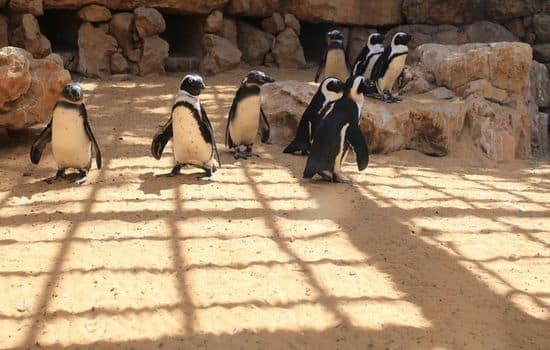Advertisements
Penguins are seabirds that have traded flying for swimming. Although they cannot fly, they can swim long distances.
Some species spend 70% of their lives in water.
Advertisements
There are currently 18 species of them, but research with fossil records indicates that 32 species once existed.
More than 40 million years ago, our ancestors lost the ability to fly and adapted to marine life, acquiring the ability to swim.
Advertisements
SEE TOO
SEAHORSES AND THEIR CURIOSITIES
EVERYTHING YOU NEED TO KNOW TO BREED YOUR OWN TURTLE
THE MOST FAMOUS SPECIES OF BRAZILIAN BIRDS
See Also:
Their habitat is in the southern hemisphere, being very common in Antarctica.
They can also be found in warmer regions, such as New Zealand, southern Africa, Australia, and South America, and the Galapagos, near the Equator.
Characteristics of penguins
The largest species of penguins can reach 1 meter in length and weigh up to 30 kilos.
And the smallest ones measure around 40 centimeters and weigh 2 kilos.
Penguins have adapted well to swimming, as they have elongated bodies and wings modified into muscular flippers.
Once or twice a year, they change their feathers. During this period, they do not enter the sea.
The species have a color pattern in which the dorsal region is dark and the ventral region is white.
Their coloration camouflages them in the sea. A predator looking up from below will see a white spot, which could be mistaken for ice or sunlight.
Penguins' feet are located at the posterior end of the body and their legs are short.
The anatomy of the feet allows it to stand upright when on dry land.
It uses the support provided by its tail and fins to walk.
While swimming, the feet are held together and stretched backwards.
Penguin Feeding
Penguins eat fish, squid or small crustaceans called krill.
They dive after their prey, remaining submerged for several minutes.
The shape of their beaks is related to their food. They have longer, stronger beaks to eat fish and larger prey.
Those that feed on small prey have shorter, more delicate beaks.
They have a gland that secretes excess salt accumulated in the bloodstream, and they can drink sea water.
Penguins are sociable
Most of them live in large colonies, swimming and hunting in groups.
In winter, individuals that inhabit cold regions stay together, forming a huge circle.
This way, they keep warm and prevent the circulation of cold winds through the colony.
Communication is done through the emission of various types of vocalizations and the performance of various body movements.
They can exchange information about the proximity of predators, choose breeding partners and recognize offspring.

Penguin reproduction
Mating occurs once a year, during the warmer seasons.
During this period, couples remain together and may or may not meet again in the next season, characterizing them as monogamous.
The male uses vocalizations and body movements to impress the female.
Some of them prepare their nests with small stones, where they lay their eggs.
Others lay their eggs on their feet, avoiding contact with the ground and keeping them warm with body heat.
Incubation lasts around one to two months. The parents take turns caring for the chick, looking for food and protection.
They care for the young until they can swim for their own food, which takes between two and 13 months.
Interesting facts about penguins in Brazil
During winter, it is common to find penguins on Brazilian beaches.
The species that arrives on our coast is the Magellanic penguin, which comes from the southern coast of South America.
They are young people going out in search of food, they end up getting lost from the group and being dragged by the sea currents.
Arriving alive on our beaches they are hungry and tired.
The Magellanic penguin inhabits regions where the temperature varies between 7° and 30°C and there is no ice.
If you find one of these animals on the beach, under no circumstances should you put it on ice: it could suffer hypothermia (a reduction in body temperature).
Just keep it in a dry, warm place, like a box lined with newspaper, and seek veterinary care immediately.
Fun facts about penguins
- Penguins do not have teeth;
- Penguins originated in Australia;
- The smallest penguin is only 30 centimeters tall;
- The largest penguin is the emperor, which can reach up to 1.22 meters.
- The fastest species is the gentoo, which can swim at speeds of 35 km/h.
- Penguins are loyal to the exact location where they nest, returning to the same place where they were born.
- They have no visible ears, but their hearing is excellent.
- When they return to their breeding grounds, they use distinct noises to identify their mates.
- Unlike other marine mammals, which depend on fat to stay warm, penguins survive thanks to their feathers.
- Feathers produce a layer of warm air close to the skin that serves as insulation, especially when they generate heat when swimming.
- Visit the website of World Animal Protection and stay up to date with animal protection work around the world.
